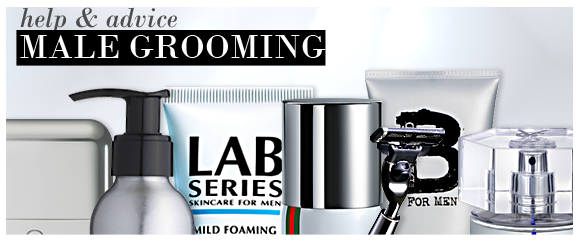
Thanks to the rise of male interest magazines and grooming blogs, men are taking personal care increasingly seriously. Unless a man decides to sport a fetching beard, shaving his facial hair will be a daily chore. While his skin may be thicker and therefore better protected than a woman’s, dragging a blade across his face every day still creates significant damage to the delicate facial skin.
There are several choices when it comes to shaving. Some methods have a more profound effect on the skin than others, but the shaving-skincare equation is always a balance between maintaining the comfort and structure of the skin, and achieving the closest possible shave.
Wet Shaving
Wet shaving involves running a sharp bladed razor over the face and neck, slicing off the emerging hairs at or just below skin level. Wet razors are either entirely disposable or feature a permanent handle with a removable disposable blade.
Pros: Anyone can wet shave, although sensitive skin will require careful preparation and aftercare. It’s particularly suitable for very thick, dark, coarse and stubborn growth. It is also effective for removing longer hairs. Wet shaving has a reputation for providing a close, smooth shave.
Cons: Wet shaving can result in nicks and cuts if you’re not paying attention. A problem for many men is razor burn, which will require an intensive moisturiser or after shave balm after the shaving routine. Wet shaving also means having to replace your blades frequently.
Tips:
- In order to maximise the performance of a wet shave, and minimise any skin damage, it is important to soften the hairs and lubricate the skin before shaving. There are a range of pre-shave creams and solutions to prep your skin for optimum performance.
- The first step should be to cleanse the face and neck thoroughly, using a gentle facial wash.
- Exfoliation is fundamental to the eventual outcome of the shave, although no-one should use a facial scrub on a daily basis. Once or twice a week is enough to keep your skin in top condition.
- Prior to shaving, a specialist shaving cream, gel, foam or oil should be applied to the face and neck. This eases the path of the razor and softens the hairs, minimising dragging and nicking.
- Don’t make the mistake of shaving in an upwards direction, even though this may seem logical. Shaving upwards can intensify any irritation, so you should move the razor down your face, taking extra care over awkward areas such as the chin, the bottom of the neck and around the mouth.
- The blade should be rinsed after each stroke, and following the shave, your whole face can be splashed with warm water to remove any debris.
- Each shave should be followed by a generous application of rich facial moisturiser or specialist aftershave balm.
Electric Shaving
Power shaving involves using a mains, rechargeable or battery operated shaving unit to whisk the hairs off at high speed.
Pros: Power shaving is quick and convenient, and is suitable for all skin types. It doesn’t require shaving preparations and is ideal for sport and travel, as well as everyday use. It is also considered safer than wet shaving, as power shavers use a system of ‘foils’ rather than a sharp blade, and it is the speed at which these ‘foils’ move which give the shaver its cutting edge. For this reason, they are also more suitable for those with sensitive skin. Although the equipment may be more expensive than blades, power shavers rarely require replacement foils, and can easily be maintained with a daily brush out.
Cons: Power shavers are considered less effective on tough, dense and very dark hair. Longer hairs can cause the foils to jam, so if you’re dispensing with a beard or moustache you should wet shave, and use the separate trimmer (featured on most models of power shavers) for shaping sideburns.
Tips:
- For electric shaving the face should be clean and dry, and stubble not too long.
- Just like wet shaving, his face should first be thoroughly cleansed with a facial wash, and exfoliated on a regular basis.
However, power shaving should take place on dry skin (unless the shaver is suitable for use on wet or dry skin), so you should pat your face carefully with a clean towel. - The shaver should be moved downwards over the face, as in wet shaving, but different shaver foils require different actions. For instance, a shaver with circular foils should be slowly and gently rotated over the skin, while the straight foil shavers can be moved vertically.
- You can achieve a closer shave by pulling the skin tight as the shaver is applied. This encourages the hairs to stand on end, and makes them easier to trim.
- It can be difficult reaching some areas with a power shaver. For the hairs beneath the lips and under the nose, the integral trimmer is ideal.
Shaving Problems
Razor burn is a sore, red rash of swollen hair follicles. Wet shaving seems to cause razor burn more often than power shaving, and poor blade maintenance is a major cause. A blunt blade will ‘hook’ onto the hair without cutting it completely. This means that the hair is pulled off rather than sliced cleanly, and this causes considerable trauma to the follicle. The solution is to replace blades regularly (men with thick, coarse hair may have to use a new blade every time they shave) and maintain a properpre and post shave skincare routine.





